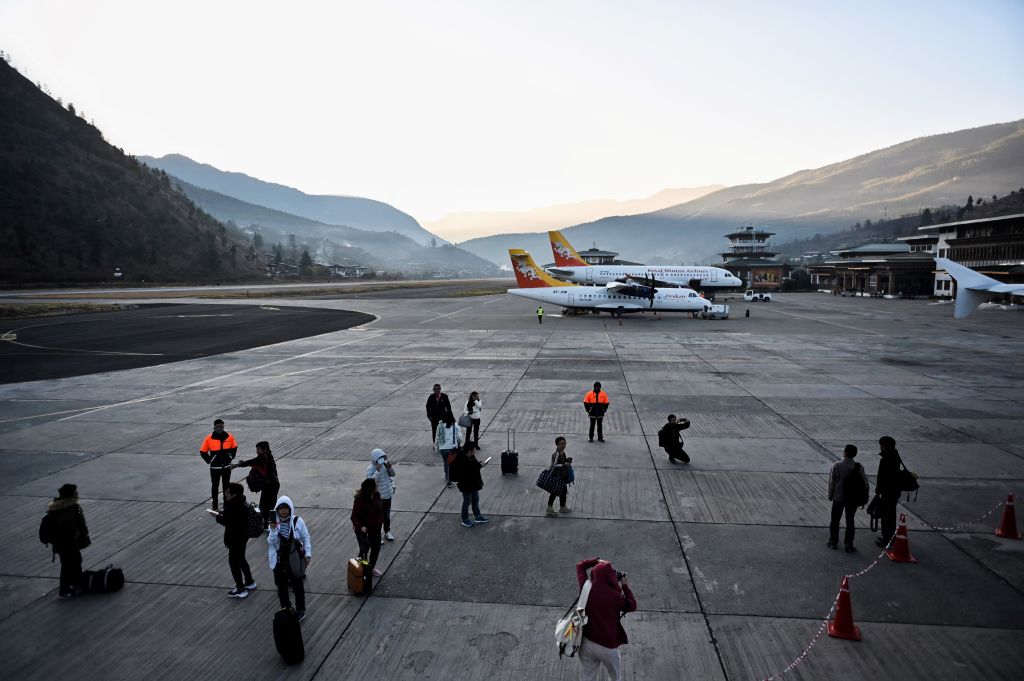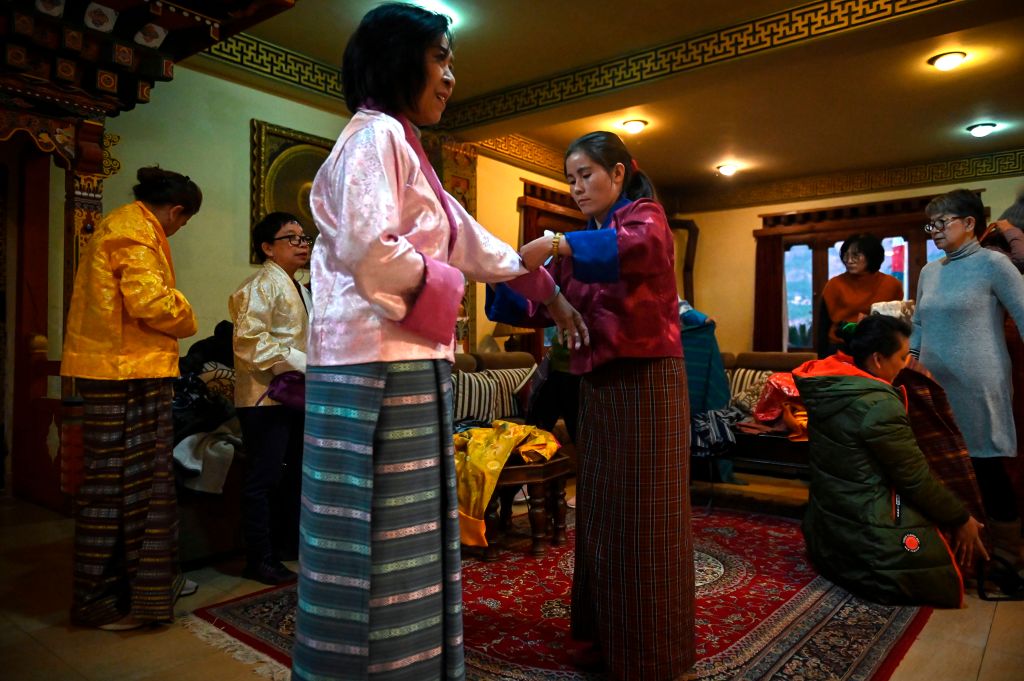
The tiny Himalyan kingdom of Bhutan reopens to tourism on Friday after two and a half years of border closures, but 35-year-old tour guide and driver Pema Wangyal doesn’t have any jobs lined up just yet. Nor is he expecting to for at least a few weeks.
There are many factors slowing the recovery of Asian tourism. Nestled between China and India, Bhutan may have just added one of its own: a daily fee of $200, imposed on anyone who wants to enter, for the length of their stay. The country was already well known for requiring visitors to spend at least $250 a day, but that sum went toward accommodation, food, transport, and the government’s “sustainable development fee.”
The new, additional $200 impost buys nothing except the privilege of enjoying Bhutan’s stunning scenery and fresh mountain air.
Wangyal understands the latest charge is meant to be a disincentive. Before the pandemic closed the country’s borders, “It was getting a little crowded,” he grants. “Bhutan is a very small country.” But he’s also worried about what it will mean for him. “I think very few tourists are coming over the next few weeks. I don’t think many guides will be employed right after the reopening, we’ll have to sit and wait.”
Dorji Dhradhul, the director-general of the Tourism Council of Bhutan, is unapologetic. The number of pre-COVID visitors was stressing the country’s infrastructure and degrading the quality of the experience, he says.
“Tourism, as an industry, was becoming less professional and was becoming low-hanging fruit,” with locals seeing it “as a very easy way to make money,” he tells TIME. “We were basically, as a sector, racing towards the bottom instead of aspiring to go higher up.”
The silver lining to COVID-19 border closures, he argues, is that it gave Bhutan “a real opportunity to stop all the things that were going wrong and it gave us an opportunity to reset our tourism.”

Bhutan doubles down on selective tourism
Bhutan is already one of the most exclusive tourist destinations in the world. The kingdom only opened its borders to foreigners in 1974, adopting a “high value, low volume” tourism policy. Tourists had to book their trips though registered tour operators and shell out those hefty minimums.
Despite the costs involved, Bhutan received more than 315,000 foreign visitors in 2019. They came for the bragging rights as much as the spectacular environment. After all, how many people can say they’ve been to the Tiger’s Nest monastery, which dangles off a cliffside, or trekked through Bhutan’s snow-capped peaks?
Read More: Asia’s Tourism Destinations Struggle to Come Back to Life
Now the country is going a step further. Starting Friday, package tours are no longer a prerequisite, but the $200 daily tax is, payable separately to lodging and meals. Officials say the new model will help rebrand the tiny Buddhist kingdom as an “exclusive destination” attracting “discerning tourists.”
The tourism industry is already feeling the impact. Tour company owner Karma Sangay Phuntsho understands that tourism numbers have been too high. Pre-pandemic, “There was a lot of litter,” he says. “Garbage all over.”
Phuntsho is now getting “a lot of inquiries,” but he says “many of them don’t book. They say ‘Bhutan is unreachable for middle class travelers like us.’”
Those who can afford it should see their daily $200 put to good use, however. The new funds are earmarked for tree planting, training programs and developing and maintaining trails. It builds on the work the government of Bhutan undertook during the pandemic, when it began upgrading roads, tidying up monuments, and even improving public restrooms around the country.

Dhradhul says that he wants to work on getting all accommodation certified as green, and says that discussions are underway to make all tourism related transport electric.
He also points out that the country of just 790,000 people has 3,000 registered tour operators and 3,500 guides. Less visitors means “they have to step up and they have to be competitive because we know for sure that the number of tour operators, the number of tour guides, this is just not feasible for the number of the tourists that we are going to get.”
Tour guide Wangyal says he plans to specialize in his native region, the Bumthang area in central Bhutan, known as the spiritual heartland of the kingdom for its sacred sites and monasteries.
Read More: The Trans Bhutan Trail Is One of the World’s Greatest Places 2022
Phuntsho’s tour agency will meanwhile receive its first guests in two and a half years on Sept. 28—a couple from Costa Rica. The next day, some guests from Brazil will arrive. In October and November, things pick up even more, with some groups coming for as long as 12 days so they can fit in the Gangtey Trek, which traverses a glacial valley and passes through several remote villages.
He’s worried about what the new fee will mean and how he will be affected by the ending of the rule requiring tourists to book through agencies like his. But he plans to remain competitive by offering more tours where guests can interact with locals, like a tour to meet local farmers, and he’s contemplating setting up tours focused on niche activities like bicycling, meditation, and yoga.
“It gives us an opportunity to look beyond the traditional sightseeing,” he says.
That is what the authorities are banking on.
“We are now really focusing on enhancing or elevating the visitors’ experiences,” says Dhradhul of the Tourism Council. “Because of COVID-19 and so many other not very good things happening, we feel that the visitors wherever they go, will be looking for a place and space where they can have peace of mind.”
More Must-Reads from TIME
- Donald Trump Is TIME's 2024 Person of the Year
- Why We Chose Trump as Person of the Year
- Is Intermittent Fasting Good or Bad for You?
- The 100 Must-Read Books of 2024
- The 20 Best Christmas TV Episodes
- Column: If Optimism Feels Ridiculous Now, Try Hope
- The Future of Climate Action Is Trade Policy
- Merle Bombardieri Is Helping People Make the Baby Decision
Write to Amy Gunia at amy.gunia@time.com